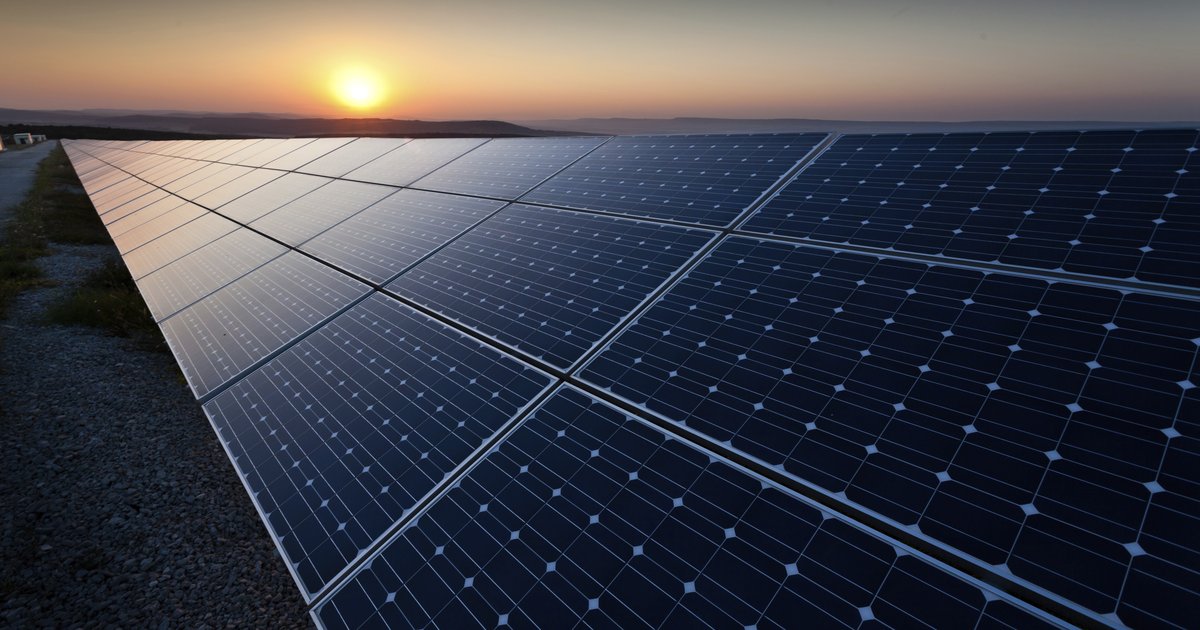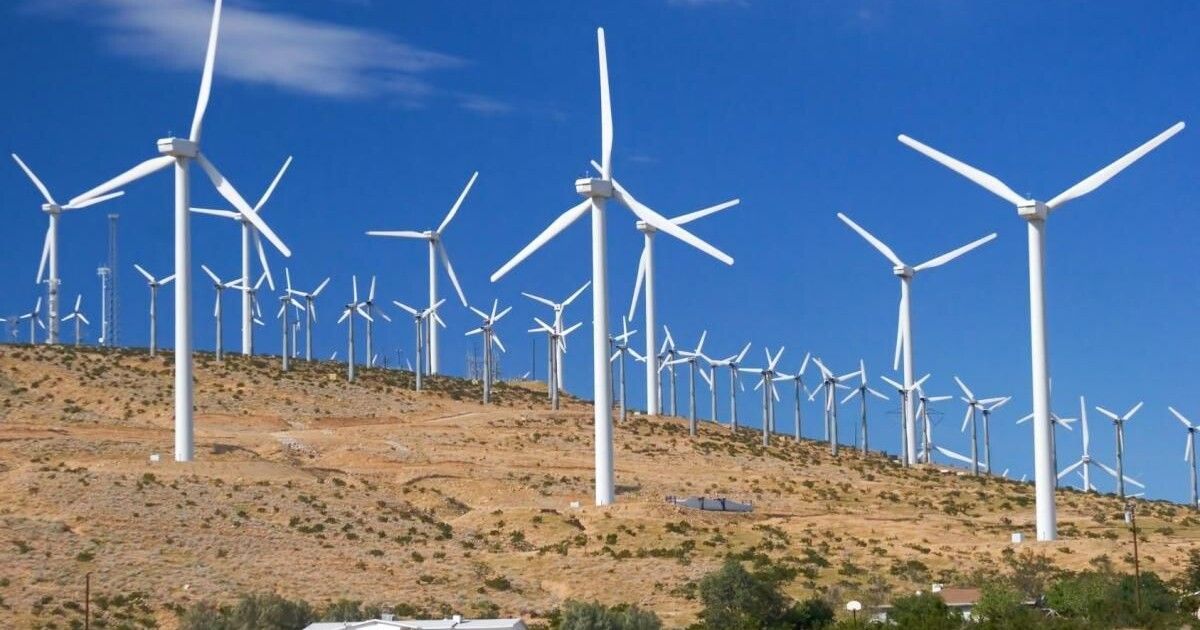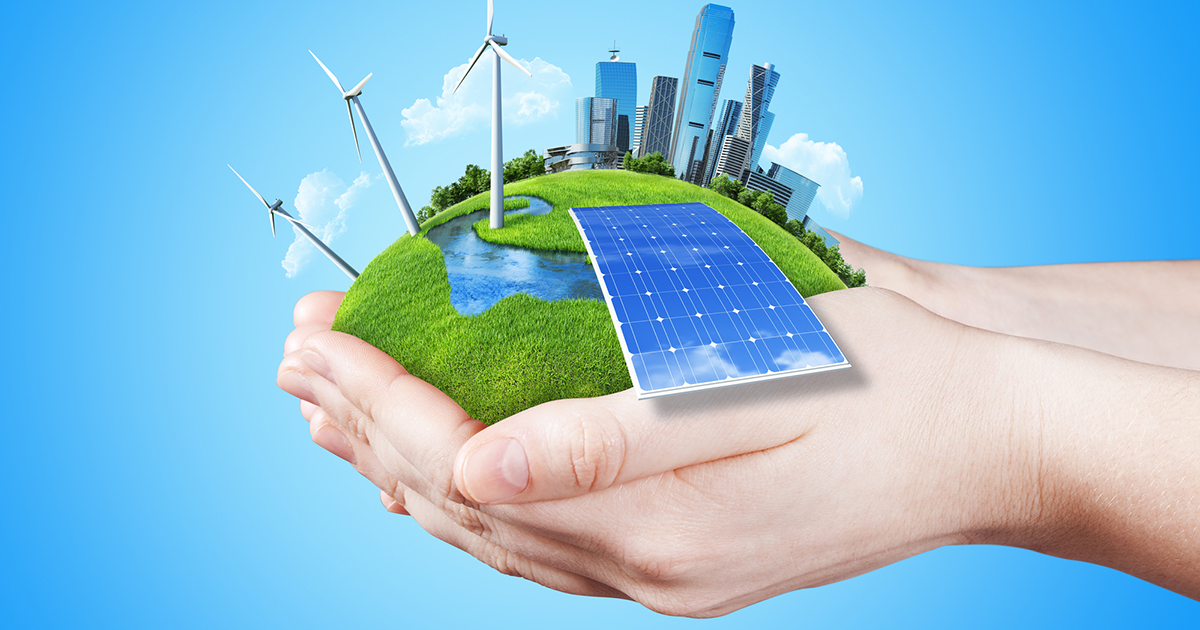Clean Energy Revolution: Harnessing Solar and Wind Power for a Sustainable Planet
The clamor for clean energy reverberates globally as we grapple with the twin challenges of rising energy demands and environmental degradation. The growing need for clean energy stems from a deep-seated realization that our current trajectory is unsustainable. Fossil fuel dependence not only exacerbates climate change but also poses significant threats to air and water quality. The urgency to pivot towards cleaner alternatives has never been more palpable.
Setting the Stage for a Sustainable Future
Amidst this pressing need, we find ourselves at the cusp of a historic transition. The clean energy revolution is more than a mere shift in power sources; it is a seismic reimagining of our relationship with the environment. As we harness the sun and wind for power, we are setting the stage for a sustainable future—one where the energy we consume today does not compromise the needs of future generations.
Understanding Solar Power

The Basics of Solar Energy
Solar energy, a timeless and boundless resource, forms the bedrock of our clean energy revolution. At its core, understanding solar energy involves recognizing the sun’s role as an astronomical powerhouse. The Earth receives an astonishing amount of solar radiation, and unraveling the science behind capturing and converting this energy illuminates the path towards a sustainable energy paradigm.
Photovoltaic Cells: How They Work
Enter the unsung heroes of solar technology—photovoltaic cells. These marvels of engineering work silently, converting sunlight into electricity through the photovoltaic effect. It’s akin to capturing the dance of photons and electrons, transforming it into a tangible, usable form of energy. The elegance of photovoltaic cells lies in their ability to turn sunlight, a seemingly intangible force, into a tangible and practical power source.
Solar Radiation: Tapping into the Sun’s Power
Solar radiation, the lifeblood of solar energy, encompasses a spectrum of light. From the visible to the infrared, each ray holds potential. Tapping into the sun’s power involves the strategic placement of solar panels to capture and convert this radiation. The more we understand the nuances of this process, the more effectively we can utilize the sun’s inexhaustible energy.
Harnessing the Sun: Solar Technologies
Solar Panels: A Closer Look
Solar panels, often adorning rooftops and open fields, are the workhorses of solar energy generation. Taking a closer look reveals the intricacies of their design and the materials used. Monocrystalline and polycrystalline panels, each with its unique advantages, beckon us to explore the optimal blend of efficiency and cost-effectiveness for a given application.
Monocrystalline vs. Polycrystalline Panels
The choice between monocrystalline and polycrystalline panels isn’t just a matter of aesthetics; it’s a strategic decision rooted in efficiency. Monocrystalline panels, with their single-crystal structure, boast higher efficiency but come at a higher cost. Polycrystalline panels, on the other hand, offer a more economical alternative. Navigating this choice is key to optimizing solar energy systems for different contexts.
Solar Inverters: Converting Sunlight into Usable Energy
Behind the scenes, solar inverters play a critical role in the solar energy symphony. These electronic maestros convert direct current (DC) generated by solar panels into alternating current (AC), making it compatible with our electrical grids. Understanding their function is pivotal in appreciating the seamless transition of solar energy from rooftop panels to our homes and industries.
Solar Batteries: Storing Energy for Later Use
However, the sun doesn’t always shine, and nighttime necessitates an alternative energy source. Solar batteries step in to store excess energy generated during sunny periods for use during less sunlit times. This aspect of solar technology addresses the intermittent nature of solar power, offering a reliable and continuous energy supply.
Wind Power: A Force for Sustainability

The Dynamics of Wind Energy
Beyond solar, we turn our attention to the invisible force that is wind energy. The dynamics of wind energy involve harnessing the kinetic energy generated by moving air. As we contemplate the intricacies of wind patterns and atmospheric conditions, we unlock a potent source of sustainable power.
Wind Turbines: Capturing Kinetic Energy
At the forefront of wind energy are the iconic wind turbines. These towering structures, adorned with sleek blades, capture the kinetic energy present in the wind. Each rotation of the turbine blades transforms this kinetic energy into mechanical power, a mesmerizing dance of nature and engineering that propels us into a cleaner energy future.
Wind Farms: Scaling Up for Greater Impact
However, the true power of wind energy emerges when individual turbines join forces to form wind farms. The collective impact of multiple turbines, strategically positioned, magnifies the potential for energy generation. Scaling up wind energy through expansive wind farms becomes a symbol of synergy, where nature and technology collaborate for a greater ecological good.
The Advantages of Clean Energy

Environmental Benefits
The advantages of clean energy extend far beyond the reduction of carbon emissions. Embracing clean energy translates into cleaner air, purer water, and healthier ecosystems. The environmental benefits are a testament to the profound impact our energy choices can have on the natural world.
Reduced Carbon Footprint
Central to the clean energy narrative is the concept of reducing our carbon footprint. By shifting away from fossil fuels, we mitigate the release of greenhouse gases, curbing the acceleration of climate change. The seemingly small choices we make in energy consumption ripple outward, leaving a positive imprint on the planet.
Mitigating Climate Change
Clean energy emerges as a formidable weapon in the fight against climate change. It stands as a proactive measure, a tangible way to address the looming threats posed by a warming planet. As we embrace renewable sources, we become architects of a climate-resilient future.
Economic Opportunities in the Green Sector
Yet, the benefits of the clean energy revolution extend beyond the ecological realm. The green sector presents a fertile ground for economic growth. Investments in renewable energy initiatives stimulate innovation, create jobs, and foster the development of a sustainable economy.
Overcoming Challenges
Intermittency Issues: Addressing the Ebb and Flow
Despite the promise of clean energy, it grapples with intermittency issues. The ebb and flow of energy production, dictated by the sun’s daily cycle or the intermittent nature of wind, present challenges for a consistent power supply. Addressing these issues necessitates innovative solutions, from advanced grid systems to energy storage technologies.
Storage Solutions: Meeting the Demands of Energy Consumption
Enter the realm of storage solutions—a critical facet of overcoming the challenges of intermittent energy sources. Advanced batteries, capable of storing excess energy during periods of abundance, become the linchpin for ensuring a continuous and reliable energy supply. Exploring these storage solutions underscores the dynamic nature of modern energy consumption.
Innovations in Clean Energy

Smart Grids: Enhancing Energy Distribution
The integration of smart grids represents a paradigm shift in energy distribution. These intelligent networks leverage advanced technologies to monitor, analyze, and optimize the flow of energy. The result is a more responsive and resilient energy infrastructure that adapts to the ever-changing demands of a modern society.
Artificial Intelligence in Energy Management
At the intersection of technology and sustainability lies the incorporation of artificial intelligence (AI) in energy management. AI algorithms, with their ability to analyze vast datasets and predict energy consumption patterns, usher in a new era of efficiency. From optimizing grid performance to enhancing energy conservation, the marriage of AI and clean energy heralds a brighter and more intelligent future.
Government Initiatives and Policies
Global Commitments to Clean Energy
Governments worldwide recognize the imperative of clean energy adoption. Global commitments, often crystallized in international agreements and accords, underscore a shared responsibility to combat climate change. These commitments set the stage for coordinated efforts to transition towards a cleaner and more sustainable energy landscape.
Incentives for Renewable Energy Adoption
In the pursuit of a cleaner energy future, governments play a pivotal role in incentivizing renewable energy adoption. Policies, tax credits, and subsidies act as catalysts, encouraging individuals and businesses to embrace sustainable alternatives. Understanding these incentives sheds light on the interconnected web of economic, environmental, and societal benefits.
Community Engagement
Empowering Communities through Clean Energy
Beyond governmental initiatives, the clean energy revolution gains momentum through community engagement. Empowering communities involves making clean energy accessible and relevant to individuals on a local level. From community solar projects to shared energy initiatives, this ground-up approach fosters a sense of ownership in the transition towards sustainability.
Educational Programs for Sustainable Practices
Education becomes a cornerstone in the clean energy narrative. Educational programs focused on sustainable practices empower individuals with knowledge and awareness. Understanding the environmental impact of energy choices transforms individuals into conscientious stewards, driving a collective commitment to sustainable living.
Case Studies
Success Stories in Solar Power Implementation
Embarking on a journey through success stories in solar power implementation unveils the transformative power of clean energy. From remote villages gaining access to electricity for the first time to urban centers reducing their reliance on traditional power grids, these case studies exemplify the real-world impact of solar energy initiatives.
Notable Wind Power Projects Around the World
Wind power projects, like modern-day marvels, dot the global landscape. Exploring notable projects provides insights into the innovative solutions driving the wind power revolution. From offshore wind farms harnessing powerful ocean winds to onshore projects situated in the heart of bustling cities, these projects showcase the diverse applications and adaptability of wind energy.
Future Trends

Advancements in Solar Technology
The trajectory of clean energy hinges on the continual advancements in solar technology. Exploring the frontiers of innovation, from next-generation solar panels with enhanced efficiency to breakthroughs in energy storage, reveals a landscape where the potential for harnessing solar power continues to expand.
Emerging Technologies in Wind Energy
Similarly, the future of wind energy is shaped by emerging technologies. From advancements in turbine design to the exploration of novel materials, the evolution of wind energy promises greater efficiency and broader applicability. Understanding these emerging technologies provides a glimpse into the untapped potential of wind power.
The Role of Individuals
How You Can Contribute to the Clean Energy Revolution
Empowering individuals to play an active role in the clean energy revolution is paramount. Providing actionable steps, from adopting energy-efficient practices in daily life to supporting and advocating for renewable energy initiatives, positions every individual as a driving force for positive change.
Residential Solar Panels: Making a Difference
The adoption of residential solar panels emerges as a tangible and impactful way for individuals to contribute. Understanding the benefits, from reduced energy bills to a decreased carbon footprint, underscores how each rooftop panel becomes a beacon of sustainability, contributing to the larger tapestry of the clean energy revolution.
Energy-Efficient Practices for Every Household
However, clean energy isn’t confined to technological solutions alone; it starts at home. Energy-efficient practices within households play a pivotal role. From simple lifestyle changes, such as using energy-efficient appliances, to embracing smart technologies that optimize energy usage, individuals can significantly reduce their environmental impact.
Corporate Responsibility
Corporate Adoption of Renewable Energy
The corporate sector, recognizing its role as a significant energy consumer, increasingly embraces renewable energy. Exploring corporate adoption unveils a landscape where businesses integrate sustainability into their operations. From investing in large-scale renewable projects to procuring renewable energy certificates, corporations become driving forces in the clean energy transition.
Green Initiatives: Beyond Public Relations
Green initiatives by corporations are not mere public relations strategies; they represent a genuine commitment to environmental stewardship. Investigating these initiatives reveals how corporations are actively contributing to the clean energy revolution, recognizing that sustainability isn’t just good for the planet but also for their bottom line and long-term viability.
Global Collaboration
International Cooperation for a Sustainable Planet
Addressing the global challenges of climate change and environmental degradation necessitates international collaboration. Examining collaborative efforts between nations, organizations, and communities underscores the interconnected nature of the clean energy revolution. Shared goals and collective action become instrumental in building a sustainable planet for current and future generations.
Sharing Best Practices and Research
The sharing of best practices and research becomes a linchpin in the global journey towards clean energy. From technological innovations to policy implementations, fostering an environment of shared knowledge accelerates the collective pursuit of a sustainable and resilient future. Collaborative efforts amplify the impact of individual initiatives, creating a global network of ideas and solutions.
Potential Barriers to Adoption
Economic Considerations
While the benefits of clean energy are compelling, economic considerations pose a potential barrier to widespread adoption. Delving into the economic landscape, exploring the initial costs versus long-term savings dynamic, allows us to devise strategies that make clean energy solutions economically viable for diverse demographics.
Initial Costs vs. Long-Term Savings
The debate between initial costs and long-term savings is central to the decision-making process for individuals and businesses considering clean energy adoption. Unraveling this dynamic not only involves understanding the financial aspects but also emphasizes the long-term economic benefits and positive environmental externalities.
Public Awareness and Education
Public awareness and education emerge as crucial factors influencing the adoption of clean energy. Exploring the role of education in dispelling myths, promoting understanding, and fostering a sense of collective responsibility is integral to overcoming barriers. Informed and aware individuals become active participants in the clean energy revolution.
Conclusion
A Call to Action: Embracing Clean Energy
As we conclude our exploration of the clean energy revolution, a resounding call to action echoes. Embracing clean energy is not merely a choice; it is a collective responsibility to safeguard the planet for future generations. The time is now to transition from passive observers to active participants in building a greener and more sustainable future.
Building a Greener Future Together
In the tapestry of the clean energy revolution, each thread represents a choice, an action, and a commitment to building a greener future together. As individuals, communities, businesses, and nations unite in this common endeavor, the vision of a sustainable planet becomes not just a possibility but a shared reality we co-create for generations to come. The journey towards a cleaner, more sustainable world is both a collective responsibility and an opportunity to leave a positive legacy for the planet and its inhabitants.
Frequently Asked Questions (FAQs) about the Clean Energy Revolution
Why is there a growing need for clean energy?
The growing need for clean energy stems from the environmental challenges posed by traditional energy sources. Fossil fuels contribute to climate change, air pollution, and other ecological issues, necessitating a shift toward sustainable alternatives.
How does solar energy work?
Solar energy is harnessed through photovoltaic cells, which convert sunlight into electricity through the photovoltaic effect. Solar panels strategically capture and convert solar radiation into usable energy.
What is the difference between monocrystalline and polycrystalline solar panels?
Monocrystalline panels are made from a single crystal structure, offering higher efficiency but at a higher cost. Polycrystalline panels, with multiple crystal structures, provide a more economical alternative.
What role do solar inverters play in solar energy systems?
Solar inverters convert direct current (DC) generated by solar panels into alternating current (AC), making it compatible with electrical grids. This crucial conversion ensures a seamless integration of solar energy into our daily lives.
How do solar batteries contribute to clean energy?
Solar batteries store excess energy generated during sunny periods, providing a continuous power supply during less sunlit times. This storage solution addresses the intermittent nature of solar power.
What dynamics are involved in wind energy?
Wind energy involves capturing the kinetic energy present in moving air. Wind turbines, equipped with blades, transform this kinetic energy into mechanical power.
How do wind farms enhance the impact of wind energy?
Wind farms, formed by the collective grouping of wind turbines, magnify the potential for energy generation. This scalable approach showcases the synergy between technology and nature.
What are the environmental benefits of clean energy?
Clean energy contributes to cleaner air, purer water, and healthier ecosystems. By reducing reliance on fossil fuels, it mitigates the impact of climate change and promotes overall environmental well-being.
How does clean energy reduce our carbon footprint?
Embracing clean energy significantly reduces our carbon footprint by minimizing the release of greenhouse gases. This proactive measure plays a crucial role in slowing down the acceleration of climate change.
Are there economic opportunities in the clean energy sector?
Yes, the clean energy sector offers significant economic opportunities. Investments in renewable energy stimulate innovation, create jobs, and contribute to the development of a sustainable and resilient economy.
How do we address the intermittency issues of clean energy sources?
Intermittency issues are being addressed through innovative solutions such as advanced grid systems and energy storage technologies. These adaptations ensure a consistent and reliable power supply.
What role do smart grids play in the clean energy landscape?
Smart grids enhance energy distribution by leveraging advanced technologies to monitor, analyze, and optimize the flow of energy. This results in a more responsive and resilient energy infrastructure.
How is artificial intelligence integrated into clean energy management?
Artificial intelligence plays a crucial role in clean energy management, from predictive analytics to optimizing energy consumption. This integration enhances efficiency and aligns technology with sustainability goals.
What global commitments exist for clean energy adoption?
Several international agreements and initiatives emphasize the global commitment to clean energy. These collaborations highlight the interconnected nature of the clean energy revolution and its pivotal role in building a sustainable planet.
How can individuals contribute to the clean energy revolution?
Individuals can contribute by adopting energy-efficient practices, supporting renewable energy initiatives, and considering the installation of residential solar panels. Every small action contributes to the collective effort.
What are the potential barriers to clean energy adoption?
Barriers include economic considerations, weighing initial costs versus long-term savings, and the importance of public awareness and education. Overcoming these barriers is crucial for widespread adoption.
How can businesses engage in corporate responsibility through clean energy?
Businesses can engage in corporate responsibility by adopting renewable energy, integrating green initiatives into their operations, and aligning sustainability with core values. It goes beyond public relations to genuine environmental stewardship.
What is the future outlook for clean energy?
The future of clean energy looks promising with ongoing advancements in solar technology and emerging innovations in wind energy. These trends indicate a continuous evolution towards a more sustainable and efficient energy future.
Is global collaboration necessary for the success of clean energy initiatives?
Yes, international cooperation is crucial for addressing global environmental challenges. Sharing best practices, research, and fostering a collaborative mindset accelerate the collective pursuit of a sustainable and resilient future.
What is the concluding message of the clean energy revolution?
The clean energy revolution calls for a collective embrace of sustainable alternatives. It is not just a choice but a shared responsibility to build a greener future together, ensuring a legacy of environmental well-being for generations to come.
Stay Tuned On Our Content
Dear Readers,
Embark on an enlightening journey with us as we delve into the realms of sustainable energy and innovative technologies. Curious minds seeking deeper insights into the intersection of technology and sustainability won’t want to miss our post on Smart Cities and Green Tech: How Sustainable Solutions Are Reshaping Urban Landscapes. Explore the transformative impact of smart cities and green technologies on urban landscapes, uncovering the pivotal role they play in shaping a sustainable future.
For those hungry for more perspectives on the renewable energy revolution, we invite you to check out an external piece that caught our attention: Renewable Energy Revolution: Illuminating a Sustainable Path. This thought-provoking read delves into the illuminating journey of renewable energy, providing valuable insights into the sustainable path that lies ahead. Expand your understanding of the green revolution by exploring this external source.
Stay tuned for more captivating content as we continue to explore the dynamic landscape of clean energy, sustainability, and the technological innovations shaping our world.
Happy Reading!





One Response